
Grand Duchess Tatiana Nikolaevna of Russia was the second daughter of Tsar Nicholas II, the last monarch of Russia, and of Tsarina Alexandra. She was born at Peterhof Palace, near Saint Petersburg.

Grand Duchess Anastasia Nikolaevna of Russia was the youngest daughter of Tsar Nicholas II, the last sovereign of Imperial Russia, and his wife, Tsarina Alexandra Feodorovna.
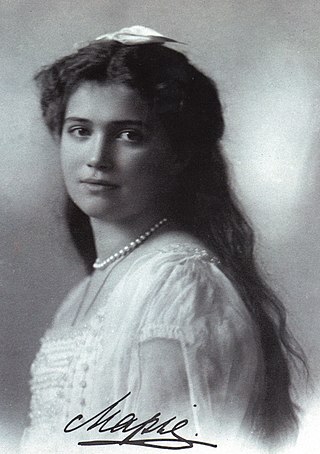
Grand Duchess Maria Nikolaevna of Russia was the third daughter of Tsar Nicholas II of Russia and Tsarina Alexandra Feodorovna. Her murder following the Russian Revolution of 1917 resulted in her canonization as a passion bearer by the Russian Orthodox Church.

In Eastern Christianity, a passion bearer is one of the various customary titles for saints used in commemoration at divine services when honouring their feast on the Church Calendar; it is not generally used by Catholics of the Roman Rite, but it is used within the Eastern Catholic Churches.
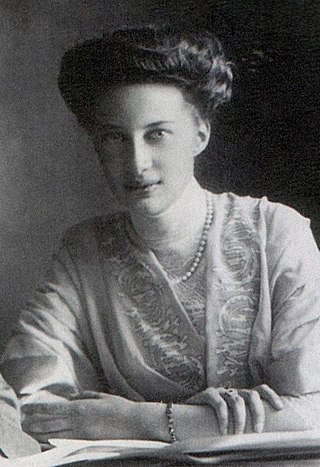
Princess Tatiana Constantinovna of Russia was the third child and eldest daughter of Grand Duke Constantine Constantinovich of Russia and his wife, Princess Elisabeth of Saxe-Altenburg.

Princess Irene of Hesse and by Rhine, later Princess Henry of Prussia, was the third child and third daughter of Princess Alice of the United Kingdom and Louis IV, Grand Duke of Hesse and by Rhine. Her maternal grandparents were Queen Victoria and Prince Albert of Saxe-Coburg and Gotha. Her paternal grandparents were Prince Charles of Hesse and by Rhine and Princess Elisabeth of Prussia. She was the wife of Prince Henry of Prussia, a younger brother of Wilhelm II, German Emperor and her first cousin. The SS Prinzessin Irene, a liner of the North German Lloyd was named after her.

Princess Anastasia Petrović-Njegoš of Montenegro was the daughter of King Nikola I Petrović-Njegoš of Montenegro (1841–1921) and his wife, Queen Milena (1847–1923). Through her second marriage, she became Grand Duchess Anastasia Nikolaevna Romanova of Russia. She and her sister "Militza", having married Russian royal brothers, were known colloquially as the "Montenegrin princesses" during the last days of Imperial Russia, and may have contributed to its downfall by the introduction of Grigori Rasputin to the Empress Alexandra.

Princess Helen of Serbia was a Serbian princess. She was the daughter of King Peter I of Serbia and his wife, the former Princess Ljubica of Montenegro. She was the elder sister of George, Crown Prince of Serbia and King Alexander I of Yugoslavia. Helen was also a niece of Queen Elena of Italy, Princess Anastasia of Montenegro, wife of Grand Duke Nicholas Nikolaevich of Russia and of Princess Milica of Montenegro, wife of Grand Duke Peter Nikolaevich of Russia, the women who introduced Grigori Rasputin to Tsarina Alexandra.
Larissa Feodorovna Tudor was the wife of Owen Frederick Morton Tudor, an officer of the 3rd Hussars. Following her death, it was rumoured that she was in truth Grand Duchess Tatiana Nikolaevna of Russia, the second daughter of Nicholas II of Russia, and of Tsarina Alexandra.
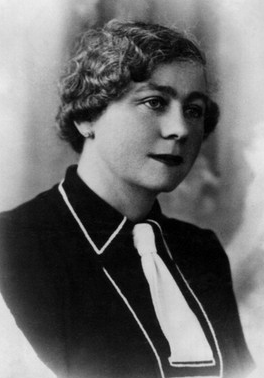
Marga Boodts was a woman who claimed to be Grand Duchess Olga Nikolaevna of Russia. She was one of a considerable number of Romanov pretenders who emerged from various parts of the world following the execution of Tsar Nicholas II and his family at Yekaterinberg on July 18, 1918. She stands out, however, as one of very few who claimed to have been Grand Duchess Olga, the Tsar's oldest daughter. She was also known as Maria Bottcher.
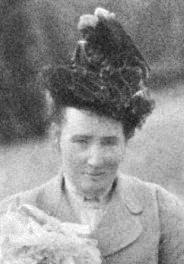
Margaretta Alexandra Eagar, was an Irishwoman who served as a nanny to the four daughters of Emperor and Empress Nicholas II and Alexandra Feodorovna of Russia, the Grand Duchesses Olga; Tatiana; Maria; and Anastasia—known collectively as OTMA—from 1898 to 1904.
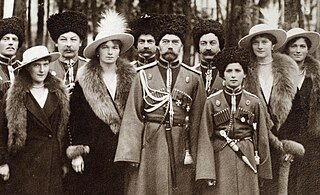
Members of the ruling Russian imperial family, the House of Romanov, were executed by a firing squad led by Yakov Yurovsky in Yekaterinburg, Russia, on July 17, 1918, during both the Russian Civil War and near the end of the First World War.

The Romanovs: An Imperial Family is a 2000 Russian historical drama film about the last days of Tsar Nicholas II and his family. The Russian title implies both the Imperial Crown of Russia and the crown of thorns associated with martyrs. The film premiered at the 22nd annual Moscow Film Festival. The film was selected as the Russian entry for the Best Foreign Language Film at the 76th Academy Awards, but it didn't make the final shortlist.
Anastasia of Russia may refer to:

Grand Duchess Olga Nikolaevna of Russia was the eldest child of the last Tsar of the Russian Empire, Emperor Nicholas II, and of Empress Alexandra of Russia.
Anastasia Romanova primarily refers to:
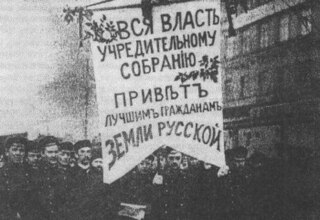
Events from the year 1918 in Russia

The Last Czars is a six-part English-language docudrama that premiered on Netflix on July 3, 2019. The series follows the reign of Nicholas II, the last emperor of Russia's Romanov Dynasty, from his accession to the throne in 1894 to his execution along with the Romanov family in 1918.

Alexandra Alexandrovna Tegleva, also known as Shura Tegleva and Sasha Tegleva, was a Russian noblewoman who served as a nursemaid in the Russian Imperial Household. As nursemaid to the children of Emperor Nicholas II and Empress Alexandra Feodorovna, she went with the family into exile in Tobolsk following the abdication of Nicholas II during the February Revolution, but was ultimately prevented from staying with them during their house arrest at Ipatiev House. She survived the Russian Revolution and married Pierre Gilliard, a Swiss academic who served with her in the Imperial Household as the children's French tutor. She moved to Lausanne as a white émigré and remained there the rest of her life. Tegleva worked with her husband to investigate and debunk the claims made by Anna Anderson, a Romanov impostor who pretended to be Grand Duchess Anastasia Nikolaevna.
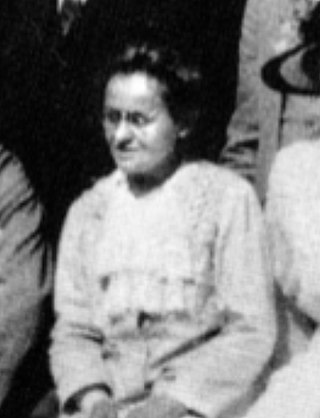
Elizaveta Nikolaevna "Liza" Ersberg was a German-Russian parlormaid who served in the Russian Imperial Household. The daughter of a stoker employed by Emperor Alexander III, she was hired by Empress Maria Feodorovna as a parlormaid at the Alexander Palace in 1898. She used her post to obtain a position at court for her friend Anna Demidova, who became a lady-in-waiting to Empress Alexandra Feodorovna.

















